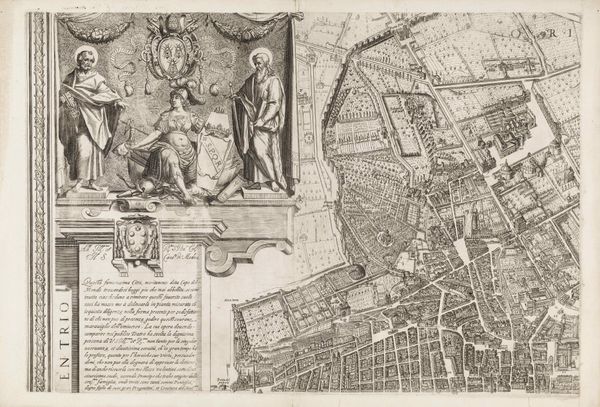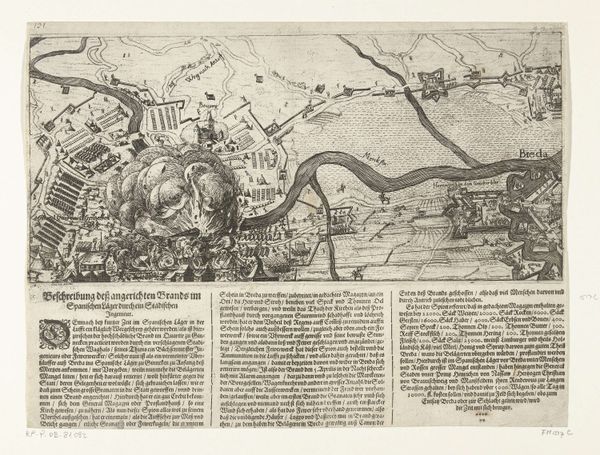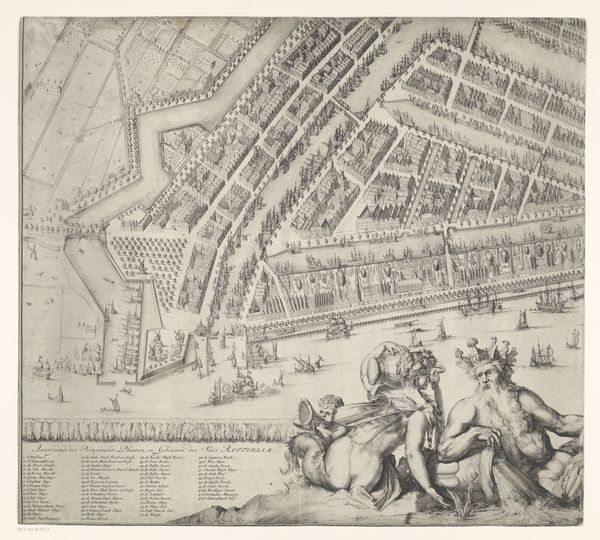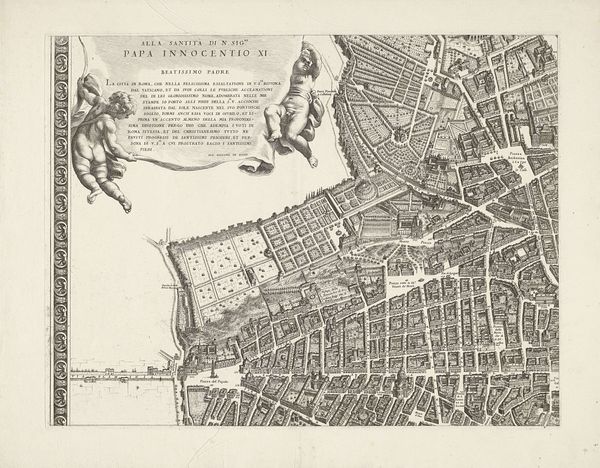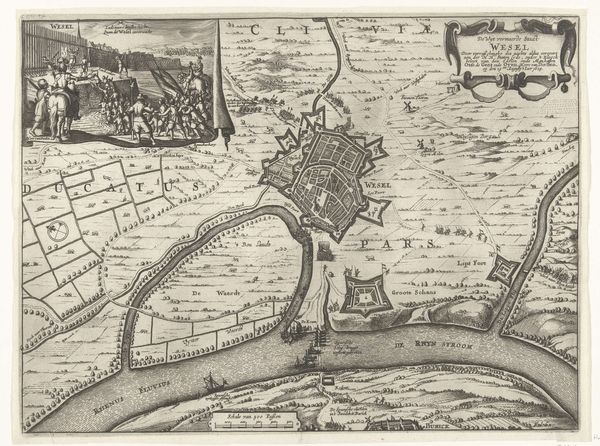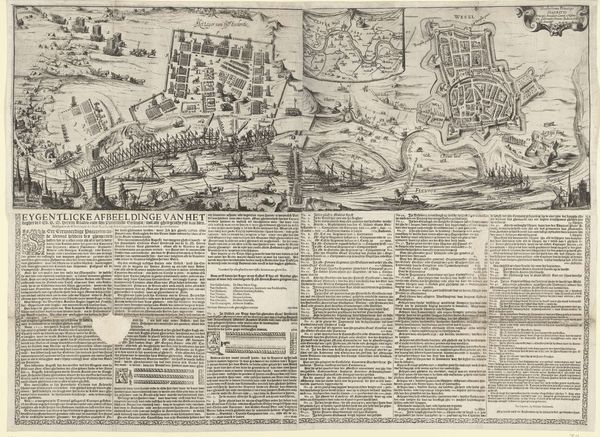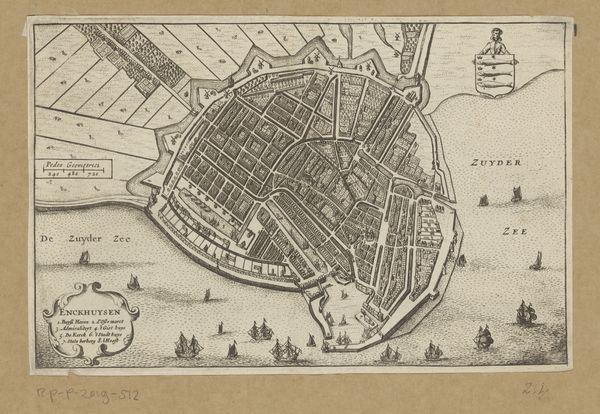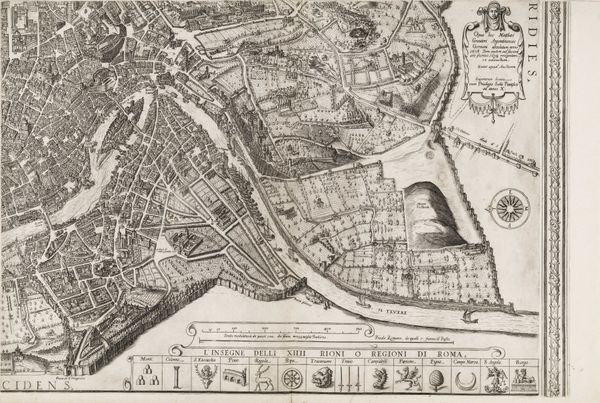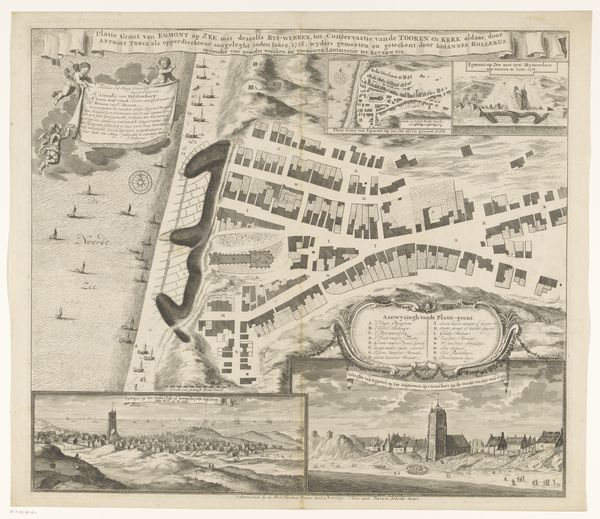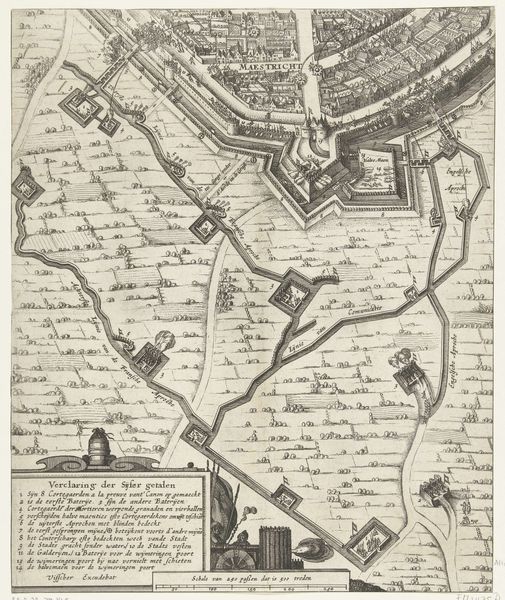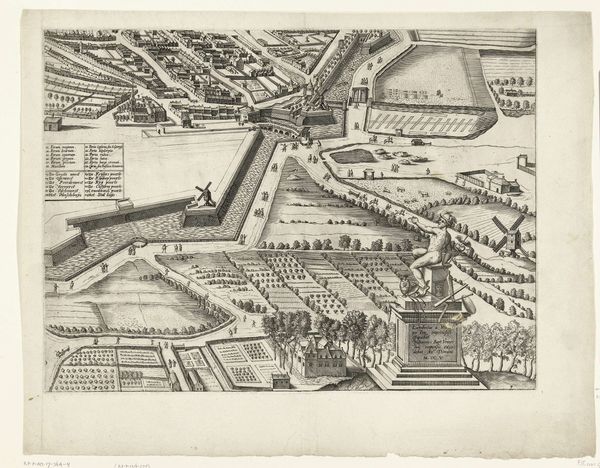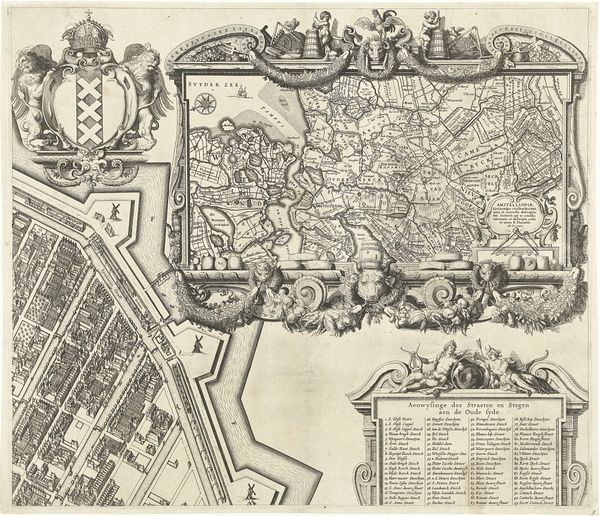
print, engraving
#
baroque
# print
#
cityscape
#
history-painting
#
engraving
Dimensions: 1850 mm (height) x 1300 mm (width) (monteringsmaal), 466 mm (height) x 698 mm (width) (bladmaal)
Curator: Looking at this print, "Map of Rome. Lower left part" created in 1634 by Matthäus Greuter, my first thought is just, wow, such an incredible amount of detail. It feels so rich and somehow still… playful. What’s grabbing your attention, Editor? Editor: It’s a beautiful object. Seeing the work that went into engraving those minute lines… thinking of the production of prints like these in the 17th century, how they circulated, who had access to them— that's where I see the true value. It speaks volumes about early modern urban life and information dissemination. Curator: Right. You zero in on the material history! And of course, beyond just dissemination of knowledge, the map is designed with the baroque aesthetic in mind. There's a lot going on with the symbolism around water and aqueducts down in that corner— the Tiber river god, Romulus and Remus, those figures with the pouring vases... It isn’t just functional; it’s trying to be visually and intellectually impressive, right? Editor: Absolutely. The inclusion of these symbolic elements— the city's water sources personified, ancient mythology juxtaposed with the city's present state – is meant to assert Rome's authority. The artist strategically interweaves production capabilities and the symbolic capital into its very representation. Consider also the paper it's printed on – was it locally sourced? What's the supply chain for its creation look like? Curator: Hmmm, very intriguing. I never really focused on the paper before, too lost in the cityscapes themselves, how much work went into rendering the tiny streets and structures. But those flourishes and those personified Roman icons serve a vital purpose – reinforcing the eternal idea of Rome. I am completely fascinated with how the physical reality and ideological meaning can occupy the same frame. Editor: And, to circle back, it’s important to recognize the hands that made this. Whose labor printed this? Who transported the prints and where? Art is, in fact, work. Considering its economic and social contexts is paramount to understanding its enduring appeal. Curator: Very true. I appreciate that shift in perspective so much, shedding light not only on how it looks, but also on what kind of value these maps had, the kind of power. Editor: Exactly. With a fresh look, the next visitor will also see beyond what initially seems like just an exquisitely detailed map.
Comments
No comments
Be the first to comment and join the conversation on the ultimate creative platform.
